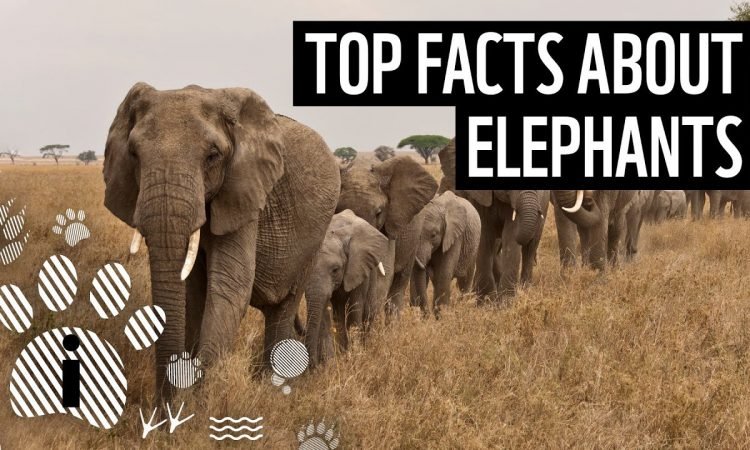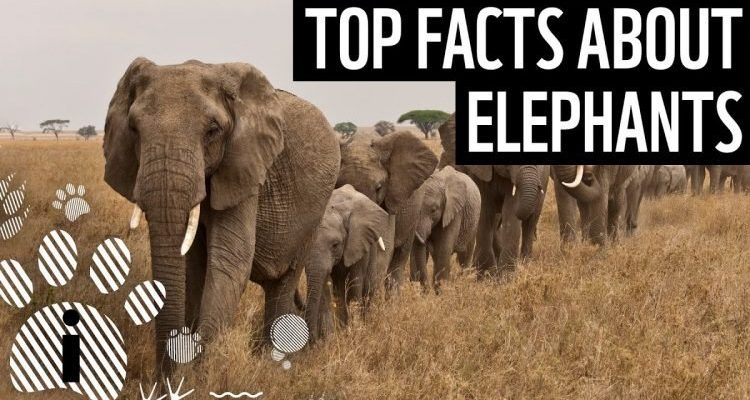
Elephants are often seen as wise and nurturing animals. They have complex social structures and exhibit behaviors that demonstrate their emotions, much like us. It’s like they have their own family units, complete with bonds and relationships that are beautifully intricate. As we go through these fascinating facts, you might find yourself seeing these magnificent animals in a new light—one filled with admiration and respect.
1. The Largest Land Mammals
African elephants are the largest land mammals on Earth. Adult males can weigh between 10,000 to 14,000 pounds! That’s like having a small car walking beside you. Their height can reach up to 13 feet at the shoulder. Imagine standing next to one; they’re about as tall as a giraffe lying down! Female elephants are smaller but still impressive, weighing around 5,000 to 8,000 pounds. It’s hard to wrap your head around just how massive they are.
You might be wondering how they can support that weight. Well, their large bones and sturdy legs are designed for strength and endurance. These elephants are built for their environment, making them not only a sight to behold but also truly aspirational in their adaptability.
2. Social Creatures with Strong Bonds
Elephants are known for their strong social structures. They live in family groups led by a matriarch, usually the oldest female. Think of her as the wise grandmother of the herd, guiding them using her experiences. The family groups consist of mothers, their offspring, and other related females. They collaborate for activities like foraging for food, raising young, and protecting each other.
What’s heartwarming is how they express emotions. Elephants grieve for lost family members, show joy when they meet each other, and comfort those in distress. It’s like they have their own language of feelings, using trumpets, rumbles, and even body language to communicate. This social fabric makes them more than just animals; they are a family with deep connections.
3. Incredible Memory
You’ve probably heard the saying, “An elephant never forgets,” and there’s a lot of truth to it. Elephants have remarkable memories that help them survive in the wild. They can remember the locations of water sources, food trees, and the migration routes their herd used years ago. Imagine knowing the landscape like the back of your hand!
Their keen memories also extend to social interactions. Elephants can recognize individual elephants, even after being separated for years. This ability to recall faces is vital for maintaining social bonds and navigating their complex relationships within the herd.
4. Communication: More Than Just Sounds
Elephants communicate in various ways, using a combination of vocalizations, body language, and even vibrations. You might think they just trumpet their way through life, but they also produce low-frequency sounds called infrasound. These sounds can travel long distances, enabling them to communicate with other elephants that might be several miles away. It’s like sending a text message without using a phone!
Their trunk plays an essential role in communication too. A gentle touch can comfort a friend, while a firm movement might showcase authority. Watching them interact is like witnessing a dance of emotions and signals, with each gesture saying something meaningful.
5. A Unique Diet
Elephants have a diverse diet focused primarily on grasses, leaves, fruits, and bark. They are herbivores and consume up to 300 pounds of food daily! That’s like eating an entire grocery cart of veggies and fruits every day. Their long trunks are perfect for reaching high branches or digging up roots, making them skilled foragers.
What’s fascinating is how their eating habits impact the ecosystem. As they forage, they help with seed dispersal and trunking habitat for other animals. In a way, African elephants act as nature’s gardeners, shaping the environment around them.
6. Threats to Survival
Despite their size and strength, African elephants face serious threats. Poaching for their ivory tusks is a significant concern. The illegal ivory trade has dramatically impacted their populations, leading to a decline in numbers. Habitat loss due to human encroachment and climate change also poses challenges, making it harder for them to find food and water.
You might be wondering what we can do to help. Supporting wildlife conservation efforts, spreading awareness, and choosing eco-friendly products can make a real difference. Every action counts, and by caring about their future, we keep the spark of these magnificent creatures alive.
7. Lifespan of Over 60 Years
African elephants can live a long time, often reaching 60 to 70 years in the wild. That’s longer than many humans! Their lifespan allows them to establish deep connections within their herds and pass on knowledge to younger generations. Just think of the experiences they gather over those years—like living history books!
In captivity, with proper care, they can live even longer. However, this brings its own set of challenges. Many captive elephants face health issues, so conservationists emphasize the importance of respecting their natural habitats and promoting wild populations.
8. Cultural Significance
Elephants hold a special place in many cultures across Africa. They are often seen as symbols of strength, wisdom, and loyalty. Various tribes and communities celebrate them through art and storytelling. In some cultures, elephants are viewed as ancestral spirits, linking the past to the present.
This cultural significance has helped raise awareness about their plight. Many local communities work hand-in-hand with conservationists to protect elephants, recognizing their importance not just in nature, but in tradition and identity. It’s a beautiful reminder that protecting wildlife is often intertwined with human culture.
9. A Unique Defense Mechanism
When threatened, elephants use a fascinating combination of size and strategy for defense. Adult elephants, especially matriarchs, will stand their ground, often forming a protective circle around the young ones. They may flap their large ears or produce loud sounds to intimidate potential predators. Think of it like a fortress of strength!
Even more impressive is their ability to use tools. Elephants have been observed using branches to swat away flies or even to dig for water. This resourcefulness adds another layer to their already incredible survival skills, showcasing their intelligence in the wild.
10. Conservation Efforts and Hope for the Future
Despite the challenges, there’s hope for African elephants. Various organizations are dedicated to preserving their habitats and protecting them from poaching. Community-led initiatives involve local populations in conservation, fostering a sense of stewardship and responsibility toward these majestic creatures.
You might be surprised to learn that ecotourism plays a role too. Safaris and wildlife tours provide funding for elephant conservation while allowing people to connect with these animals in their natural habitat. Every ticket purchased helps protect their future, making it a win-win for both elephants and those who care about them.
In conclusion, African elephants are extraordinary beings with much to teach us about connection, memory, and the importance of community. Their lives remind us of nature’s incredible wonders and the shared responsibility we have in protecting them. As we learn more about these gentle giants, let’s take a moment to appreciate their presence on this planet and do our part to ensure they thrive for generations to come.

